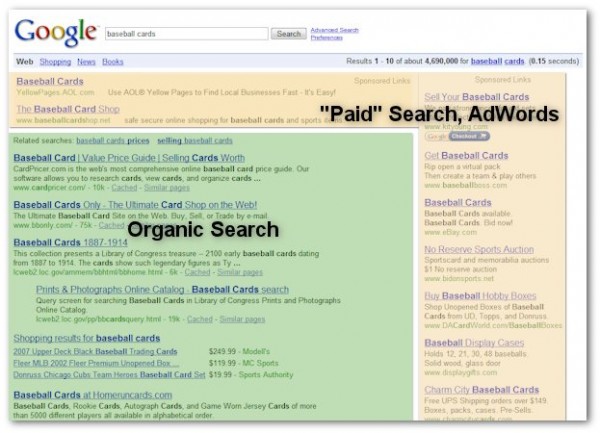There is much written about Google rankings and how to get to the top of the first page, and many...
Search Engine Optimisation (SEO) Basics
 One of the biggest drivers of traffic to your website will be Google. The traffic that Google sends will be people who are interested in what you have to offer. The great thing about SEO is that very few business websites (large and small) are optimised for search engines and great opportunities are available to capture market share in your niche.
One of the biggest drivers of traffic to your website will be Google. The traffic that Google sends will be people who are interested in what you have to offer. The great thing about SEO is that very few business websites (large and small) are optimised for search engines and great opportunities are available to capture market share in your niche.
But in order to have a high ranking website, your website needs to be optimised for the search engines and whilst the exact formula is secret, Google do provide you with a guide to ranking in the search engines.
While SEO is a huge subject, there are a few simple things that you can put into action on your website that will help increase your rankings in Google. SEO is a long term proposition with no instant results but very long term benefits.
In summary, these are:
- Title Tags
- Meta Descriptions
- URL
- Headings
- Alt Text
One of the biggest factors in SEO is links from other sites, but as you do not have direct control over who links to your site, I have excluded this from my discussion today, but I will address link building in a later email.
Basic principles
Before we start talking about the individual components there are a couple of basic principles that you should know:
- One Keyword = One page. Do not try and do everything on one page. For each keyword that you are targeting have a separate page i.e. one page for blue widgets, one page for red widgets. Blogs which I will talk about in another email make this very easy.
- Unique content. Each page on your site should be unique from other pages on your site and other pages on the web. People often make mistakes by having identical sites with different domain names or copying content (from other sites).
- Do Not Keyword Stuff - For example "Chairs, Lounge Chairs, Dining Chairs, Kitchen Chairs, Office Chairs". In that case, each type of chair would have a separate page.
Quick Test To See How Your Site is Indexed on Google
By typing in "site:www.yoursite.com.au" on the Google search page, it will return all the pages that Google has indexed from your site. You can then see how each page will appear as it on Google results and whether you need to make changes to your pages to improve their ranking. If you only have 10 pages, you will only have 10 doorways into your site.
How Google Works
Google sends out spiders to crawl the internet following links and report back to Google on the content of websites which is indexed into databases. When a person enters a search term, Google uses its algorithm of over 200 variables to return the most relevant sites for that search.
In Search Engine Optimisation, we are aiming at increasing ranking of your pages on the organic pages not the paid links. The organic results are shown in the green area below:

Studies have shown that the #1 ranking will get around 35% of the traffic, #2 around 17%, #3 around 11%, #4 to #10 will get between 8% to 2%. A listing on the second page will get between 1% and 0.2% of traffic.
So we want to get our pages listed in the top 3 positions. Ideally, you would like to get multiple listings in the top 3 positions.
Title Tags
One of the easiest things that you can do is to optimise your title tags. The title tags <title> are in the head section of each page and whilst they will show in the heading of your browser, they are a major variable in the search algorithm.
The search results will return the first line being the title tag and the keywords will be in bold as shown below:

Each page on your site should have a unique title tag and that title tag should contain the keyword for that page. Resist the temptation to have your company name at the beginning of the title tag, that is valuable real estate. Titles should be limited to 60 characters as Google will not show more than 60 characters.
Meta Description
Now the meta description does not play a major part in the ranking but it provides additional information to encourage people to click on your listing rather than your competitors. Thus you could have a lower ranked page but your description may result in more clicks. You have two lines (150 characters) to make an impact here and try an include the keywords at least once as it shows that the page is relevant to their query.

URL's & Site Architecture
If you site has pages like "yoursite.com.au/index.php?id=1234" rather than "yoursite.com.au/keyword/ then you need to think about making changes to your site. If you have a Wordpress site, the change is easy to do, but for other website platforms it may be difficult. Google places emphasis on whether in the keyword is in the URL as to whether the page is relevant to the search query. If you have dynamic URL's ( "?page=1234") then Google may find it difficult to index or place lower reliance on those pages.
Note: If you are changing existing pages from dynamic URL's or changing the name of your pages you should use 301 redirects to tell Google and your users that this was the old page and this is the new page.
Headings
Headings such as <h1>Main Heading</h1> and <h2>sub Heading</h2> <h3> etc are html tags that are used to change the font, size of headings. The keywords should be present in your headings tags and the page should have cascading h1, h2, h3 ... tags showing importance level of the content.
Alt Text
Alt test is meant to be a replacement for the image if the image does not show. If you have images on your site, you should have alt text attributes which include the keyword for that page. Most CMS website packages will have an easy to use way of adding images and including the alt text attribute. Make sure that your alt text reads properly and adds something for the reader who doesn't see the image.
Further Reading
This is only a very brief overview of a enormous subject. There is a mountain of information on SEO on the web, some of it bad and some very good.
As a start, there is:



